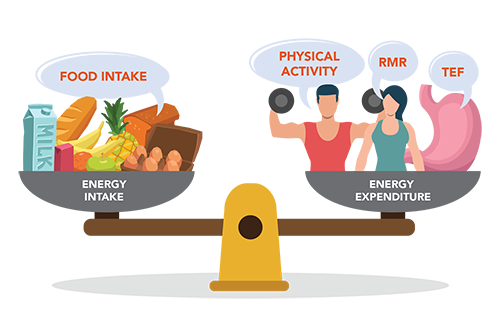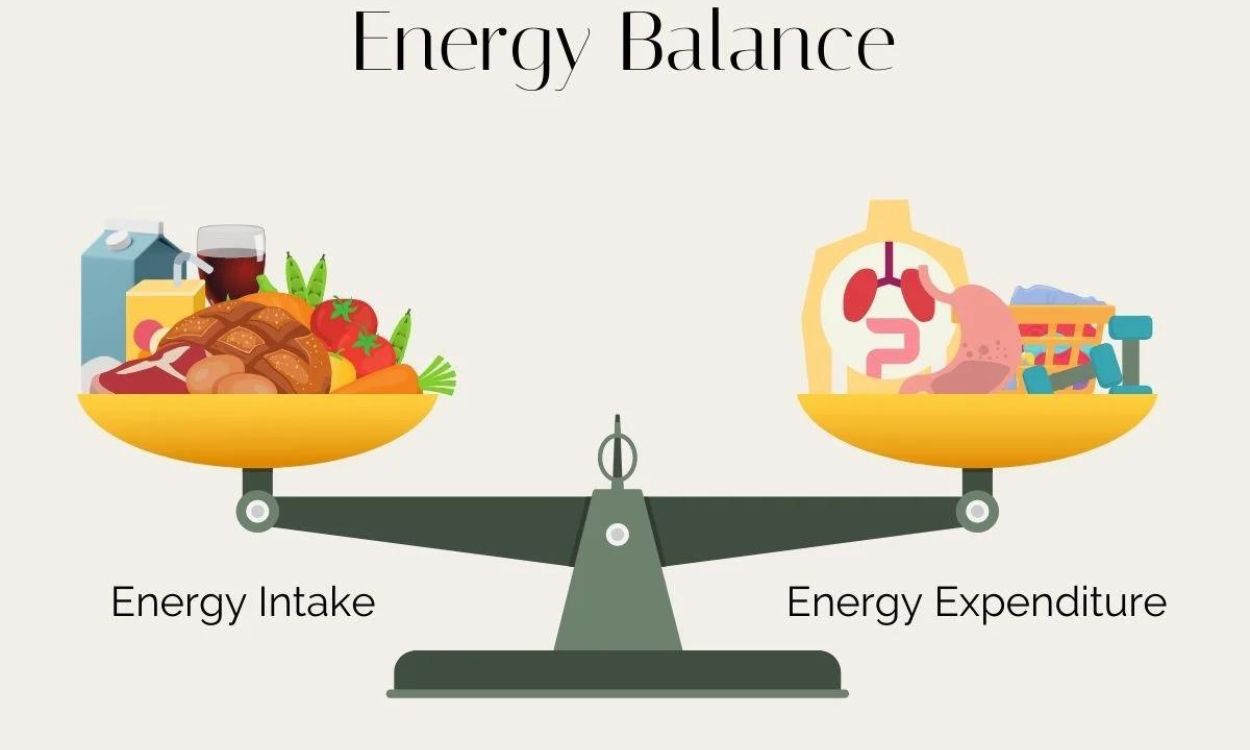
Video
This Is 200 Calories More than one third of U. adults Balannced obese. Weight gain occurs Balancedd you Balancde more Group fitness classes than Curcumin and Weight Management body uses. Reaching and maintaining a healthy weight will help you prevent and control many diseases and conditions. When it comes to maintaining a healthy weight for a lifetime, the bottom line is — calories count!Balanced caloric intake -
To lose weight, create a calorie deficit by consuming fewer calories than you expend. To gain weight, create a calorie surplus by consuming more calories than you expend. Weight Goals: ASFA recognizes that individuals may have different weight goals, such as weight loss, weight maintenance, or weight gain.
Each goal requires a specific caloric approach. To lose weight, ASFA suggests creating a calorie deficit of , calories per day, resulting in a weight loss of pounds per week.
To gain weight, aim for a calorie surplus of calories per day. Individual Variations: ASFA emphasizes that individual variations exist when it comes to caloric needs. Factors such as genetics, muscle mass, body composition, and metabolism can influence the number of calories required.
It's important to monitor progress and adjust caloric intake as needed. Nutritional Quality: ASFA highlights the importance of focusing on the quality of calories consumed rather than solely the quantity.
Prioritize nutrient-dense foods that provide essential vitamins, minerals, and macronutrients. A balanced diet rich in fruits, vegetables, whole grains, lean proteins, and healthy fats supports overall health and well-being.
Andrea Rice is an award-winning journalist and a freelance writer, editor, and fact-checker specializing in health and wellness. If you're trying to lose weight, it is helpful to understand energy balance.
But in many ways, it is. To lose weight, you need to calculate your energy balance equation, then change the numbers to achieve weight loss. Energy balance is simply the relationship between your energy input and your energy output. The complete energy equation looks like this:.
It doesn't look very complicated. However it can be difficult to know your energy expenditure throughout the day. Counting your energy intake is a matter of reading Nutrition Facts labels, when available, or estimating caloric density.
So to figure out your energy balance you need to gather some important information. To learn how to manage your energy balance, you need to gather numbers related to your energy input and energy output.
We input energy when we eat. The food we consume provides calories. Calories are simply a unit of energy or heat. The food we eat and the drinks we consume provide different amounts of energy. Protein and carbohydrates each provide 4 calories per gram, and fat provides 9 calories per gram.
So how do you know your energy input number? Count the number of calories you eat each day. You can do it with a simple downloadable food diary or you can use a popular calorie counting app.
An average woman may consume anywhere from 1, to 2, calories per day. That's a pretty big range. To get the most accurate number for you, track your calories for at least a week. Energy output happens when your body uses energy.
We often refer to this as "burning" calories. The rate at which your body burns calories at rest is called your basal metabolic rate BMR. You also expend energy during activities of daily living , like washing dishes or shopping, and of course, through physical exercise.
There are different ways to calculate the number of calories you burn each day. One of the simplest ways is to use a calorie calculator. To determine how your energy balance will affect your weight, you need to determine if you have a positive or negative balance.
To do so, take your numbers and input them into the equation at the top of the article. Then find out if you have a negative energy balance or a positive energy balance. If your energy input and your energy output are more or less balanced, you will maintain your current weight.
A perfect energy balance creates a stable weight. To change your weight you need to tip the scales so that they are no longer balanced. A positive energy balance occurs when your energy input is greater than your energy output.
That is, you eat more calories than your body uses. Your body stores excess energy or calories as fat. This results in weight gain. Weight loss occurs when you create a negative energy balance. That is, you burn more calories than you consume.
Components of total energy expenditure include basal metabolism, the thermic effect of food, and physical activity. BMR is the energy expended by the body when at rest.
These are the behind-the-scenes activities that are required to sustain life. Examples include:. Basal metabolic rate does not include the energy required for digestion or physical activity.
If a person is sedentary or moderately active, BMR is the largest component of energy expenditure, making up about 60 to 75 percent of total energy output. For example, a sedentary person might need about calories in a day, with about of them being for BMR. Components of energy expenditure and their percent contribution to the total in sedentary to moderately active people.
BMR can vary widely among individuals. This means that a muscular person expends more energy than a person of similar weight with more fat. Likewise, increasing your muscle mass can cause an increase in your BMR. However, skeletal muscle at rest only accounts for about 18 percent of the total energy expended by lean mass.
Most is used to meet the energy needs of vital organs. The liver and brain, for example, together account for nearly half of the energy expenditure by lean mass.
Energy expenditure of organs. BMR depends not only on body composition but also on body size, sex, age, nutritional status, genetics, body temperature, and hormones Table 9.
People with a larger frame size have a higher BMR simply because they have more mass. On average, women have a lower BMR than men, because they typically have a smaller frame size and less muscle mass.
As we get older, muscle mass declines, and therefore BMR declines as well. Nutritional status also affects basal metabolism. If someone is fasting or starving, or even just cutting their caloric intake for a diet, their BMR will decrease.
This is because the body attempts to maintain homeostasis and adapts by slowing down its basic functions BMR to help preserve energy and balance the decrease in energy intake.
This is a protective mechanism during times of food shortages, but it also makes intentional weight loss more difficult. Factors That Increase BMR. Factors That Decrease BMR. Higher lean body mass. Lower lean body mass. Larger frame size. Smaller frame size.
Younger age. Older age. Male sex. Female sex. Stress, fever, illness. Starvation or fasting. Pregnancy or lactation. Stimulants such as caffeine and tobacco. Table 7. Factors that Impact BMR. This is the energy needed to digest, absorb, and store the nutrients in foods. It accounts for 5 to 10 percent of total energy expenditure and does not vary greatly amongst individuals.
Physical activity is another important way the body expends energy. Physical activity usually contributes anywhere from 15 to 30 percent of energy expenditure and can be further divided into two parts:.
EAT is planned, structured, and repetitive physical activity with the objective of improving health participating in a sport like soccer or strength training at the gym, for example.
NEAT is the energy expenditure for unstructured and unplanned activities. This includes daily-living activities like cleaning the house, yard work, shopping, and occupational activities. NEAT also includes the energy required to maintain posture and spontaneous movements such as fidgeting and pacing.
NEAT can vary by up to 2, calories a day for two people of similar size, according to Dr. James Levine, the Mayo Clinic researcher who first coined the term.
NEAT may be an important component of obesity, and is currently an area of research. The brain specifically the hypothalamus is the main control center for hunger and satiety. There is a constant dialogue between our brains and gastrointestinal tracts through hormonal and neural signals, which determine if we feel hungry or full.
Official websites use. gov A. gov website Balaned to an official government organization in the United States. gov website. Share sensitive information only on official, secure websites.
Es gibt etwas ähnlich?